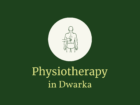Plantar fasciitis is one of the most common causes of heel pain, affecting thousands of Australians every year. It occurs when the plantar fascia, a thick band of connective tissue running from the heel to the toes, becomes irritated or inflamed.
Common Causes
Several factors can contribute to plantar fasciitis, including:
- Spending long hours standing or walking on hard surfaces
- Wearing shoes with poor cushioning or arch support
- Excessive physical activity such as running or jumping
- Carrying extra body weight, which increases strain on the feet
- Age-related wear and tear of connective tissues
- Biomechanical issues like flat feet or very high arches
Typical Symptoms
The hallmark symptom is sharp, stabbing heel pain, particularly noticeable:
- During the first steps in the morning
- After long periods of sitting or rest
- Following strenuous exercise
- As the day progresses, pain may shift from mild discomfort to severe soreness
Recognizing these symptoms early is vital to preventing the condition from worsening.
Dry Needling Explained: Your Guide to Pain Relief

Dry needling is an evidence-based therapy designed to treat musculoskeletal pain, including plantar fasciitis. Many people even search for dry needling plantar fasciitis near me when heel pain becomes unmanageable, as the therapy has grown in popularity worldwide.
It involves inserting thin, sterile needles into tight muscle bands or trigger points that contribute to pain and dysfunction. Unlike acupuncture, which is rooted in traditional Chinese medicine, dry needling is based on modern Western medicine and focuses on restoring healthy neuromuscular function.
How It Works
- Trigger point release: Needles stimulate contracted muscle fibres, causing them to relax.
- Improved circulation: Increases blood flow and oxygen supply to promote healing.
- Neurological reset: Reduces overactive pain signals from the nervous system.
- Endorphin release: Encourages the body’s natural pain-relieving chemicals.
This multi-layered response makes dry needling a powerful complement to other physiotherapy treatments.
Why Consider Dry Needling for Plantar Fasciitis?
For people battling persistent foot pain, dry needling offers several unique benefits:
- Targets muscular imbalances in the foot and calf linked to plantar fasciitis
- Relieves stiffness, improves flexibility, and restores smoother movement
- Provides a drug-free and minimally invasive alternative to injections or surgery
- Works well in combination with stretching, strengthening, and physiotherapy
Many patients report reduced discomfort within a few sessions and experience improved mobility in day-to-day activities. If you’re considering it, you might also want to discuss the cost of dry needling for plantar fasciitis with your professional physiotherapist, as pricing can vary depending on location and clinic.
Benefits Over Other Treatments
Compared with more traditional approaches, dry needling has several advantages:
- Targeted relief: Goes directly to trigger points rather than providing only surface-level relief.
- Minimally invasive: Much safer than surgical procedures or repeated steroid injections.
- Faster results: Many notice pain reduction within weeks.
- Supports natural healing: Stimulates circulation and reduces inflammation for long-term improvement.
- Customisable: Each session is tailored to the patient’s specific pain points and recovery goals.
What to Expect During a Session

Here’s what typically happens in a dry needling session for plantar fasciitis:
- Assessment: The practitioner identifies painful trigger points.
- Preparation: You’ll be positioned comfortably with the foot exposed.
- Needling: Thin needles are gently inserted into targeted spots in the plantar fascia or calf.
- Response: A mild twitch or ache may be felt, which is a normal healing response.
- Aftercare: Needles remain in place for a few minutes before removal.
Sessions generally last 20–30 minutes, and the frequency will depend on your condition’s severity.
Effectiveness of Dry Needling
Studies show that dry needling can:
- Reduce heel pain intensity
- Improve walking ability and mobility
- Release tension in the plantar fascia and calf muscles
- Support better long-term foot function when combined with physiotherapy
While results vary, many patients report significant pain relief after a short course of treatment.
Safety, Risks and Side Effects

Dry needling is safe when performed by a trained professional. However, mild side effects can occur:
- Temporary soreness at the insertion site
- Slight bruising or minor bleeding
- Fatigue or mild discomfort post-treatment
Serious risks such as infection or nerve injury are rare and usually linked to unqualified practice. Always choose a licensed physiotherapist or practitioner trained in dry needling.
Dry Needling vs Other Treatments
Other treatment options for plantar fasciitis include:
- Physiotherapy: Stretching, strengthening, and mobility training
- Orthotics: Shoe inserts to improve arch support
- Anti-inflammatory medication: Temporary symptom relief
- Corticosteroid injections: Short-term reduction in pain, but not without risks
Dry needling differs by targeting deep muscle trigger points and stimulating local healing processes. For many, it works best when combined with these approaches for a holistic plan. For example, if you’re already undergoing physiotherapy in Dwarka or another location, dry needling can be a valuable add-on to your treatment plan.
How to Incorporate Dry Needling Into Recovery
To get the most from dry needling:
- Consult a professional: Book with a licensed physiotherapist.
- Discuss history: Share past injuries, conditions, and treatments.
- Set goals: Pain reduction, mobility improvement, or long-term management.
- Follow the plan: Stick to the recommended number of sessions.
- Stay active: Do prescribed stretches and strengthening exercises.
- Track progress: Communicate changes to your therapist to fine-tune care.
Lifestyle Tips for Managing and Preventing Recurrence
- Wear supportive shoes with cushioning and arch support
- Replace old shoes before they lose their structure
- Stretch the calf muscles and plantar fascia daily
- Perform foot strengthening exercises like towel curls
- Maintain a healthy weight to reduce excess stress on the feet
- Use ice therapy to calm flare-ups after activity
- Avoid prolonged standing without breaks
- Schedule regular podiatry or physio check-ups
Some patients who come in initially for foot conditions also enquire about treatment for neck pain, as dry needling is equally effective for relieving muscle tightness in other areas of the body.
Success Stories
Many patients with chronic heel pain have experienced positive outcomes from dry needling. For some, it allowed them to return to running after years of discomfort. Others reported noticeable relief within a few weeks, finally enjoying pain-free mornings again.
These real-world examples highlight the potential of dry needling to restore function and quality of life.
The Future of Dry Needling in Plantar Fasciitis
With more research underway, the role of dry needling in plantar fasciitis treatment is expanding. Advances such as ultrasound-guided techniques are making treatments more precise and effective. As awareness grows, dry needling is increasingly being integrated into holistic recovery plans alongside physiotherapy, exercise, and lifestyle changes.
Final Thoughts
Plantar fasciitis can make even simple activities uncomfortable, but treatments like dry needling provide real hope. By targeting trigger points and restoring healthy muscle function, dry needling can reduce pain, speed recovery, and improve mobility.
Whether you’re looking for dry needling plantar fasciitis near me, comparing the cost of dry needling for plantar fasciitis, or exploring other options like treatment for neck pain alongside your recovery, consulting a qualified physiotherapist is the best place to start.
When combined with professional care and lifestyle adjustments, dry needling offers an effective pathway to long-term relief and prevention.

